2024 Ford F-150 Lightning Review and Test Drive
The latest version of this all-electric truck has all the right features at an attractive price but faces stiff competition.
 Tim Stevens
Tim Stevens
Since it hit showrooms in 2022, it's been a whirlwind ride for the Ford F-150 Lightning. While the Rivian R1T beat it to market, the Lightning arrived ahead of competitors such as the Chevrolet Silverado EV, Ram 1500 REV, and Tesla Cybertruck, making it an early player in the rapidly evolving electric-pickup segment. That the Lightning looks similar to other F-150s might not resonate with buyers wanting something, well, flashier.
Meet the 2024 F-150 Lightning Flash.
The new-for-2024 Flash brings a greatest-hits menu of tech-forward options together for about $70,000. The 2024 Ford F-150 Lightning also comes in XLT, Lariat, and Platinum trim levels, with base prices ranging from the mid-$60,000s to the high $80,000s, including the destination charge to ship the truck from the Dearborn, Michigan, factory that builds it to your local dealership. It qualifies for the full $7,500 federal EV rebate.
For this review, I test-drove the Lightning Flash in Michigan. Optional equipment highlights included a three-year subscription to the BlueCruise hands-off driver-assistance system, a Pro Power Onboard Package, and a Max Trailer Tow Package, bringing the manufacturer's suggested retail price to $82,285, including the $2,095 destination charge. Ford provided the vehicle for this review.
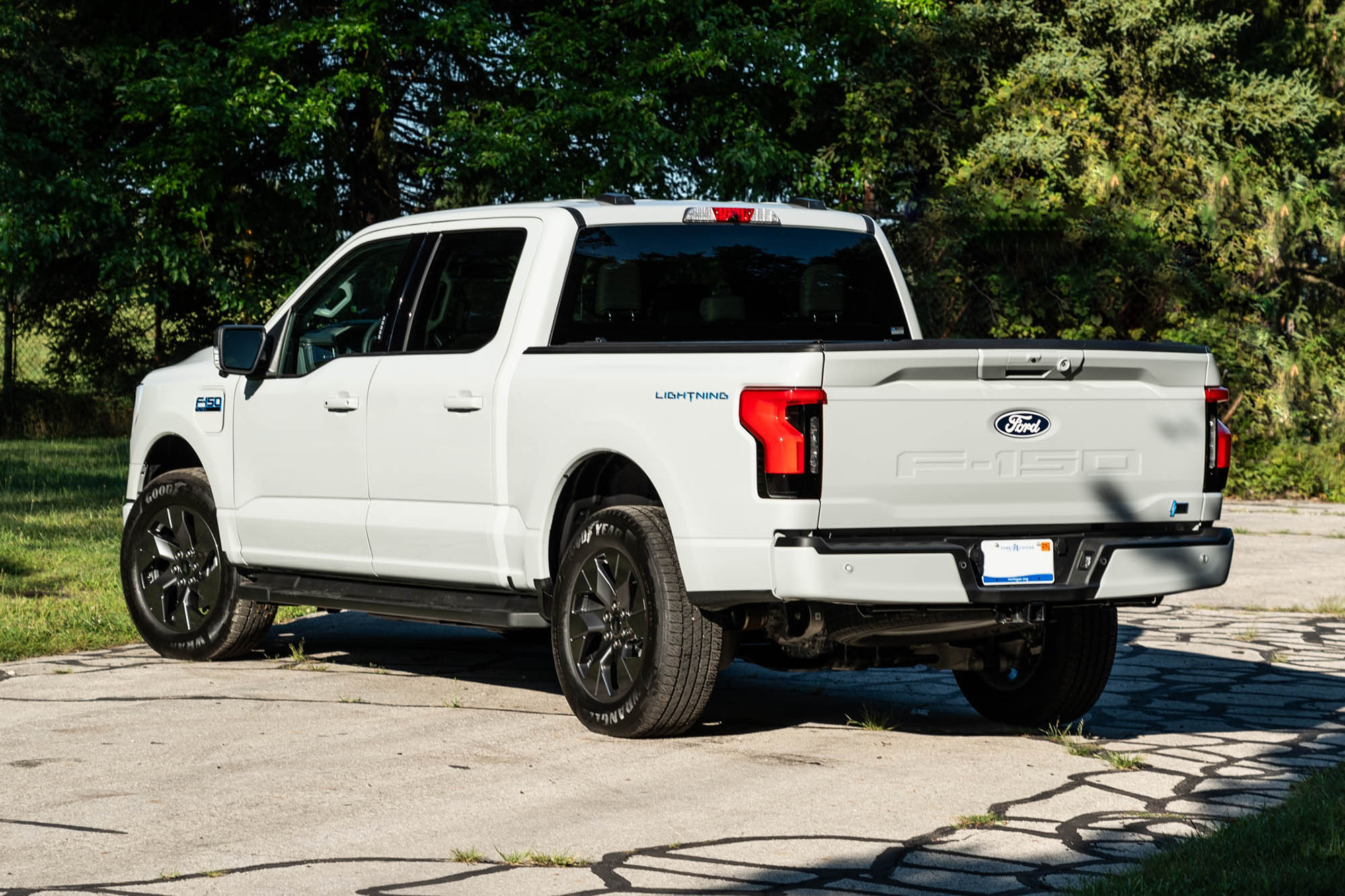 Tim Stevens
Tim Stevens
Is the 2024 Ford F-150 Lightning a Good Truck?
The 2024 F-150 Lightning Flash is a relatively simple truck equipped with a selection of desirable upgrades, creating an electric pickup with enough tech to be compelling yet with a strong focus on the basics. It's also easily purchased and serviced given Ford's extensive network of U.S. dealers, a real advantage over the Rivian R1T and Tesla Cybertruck.
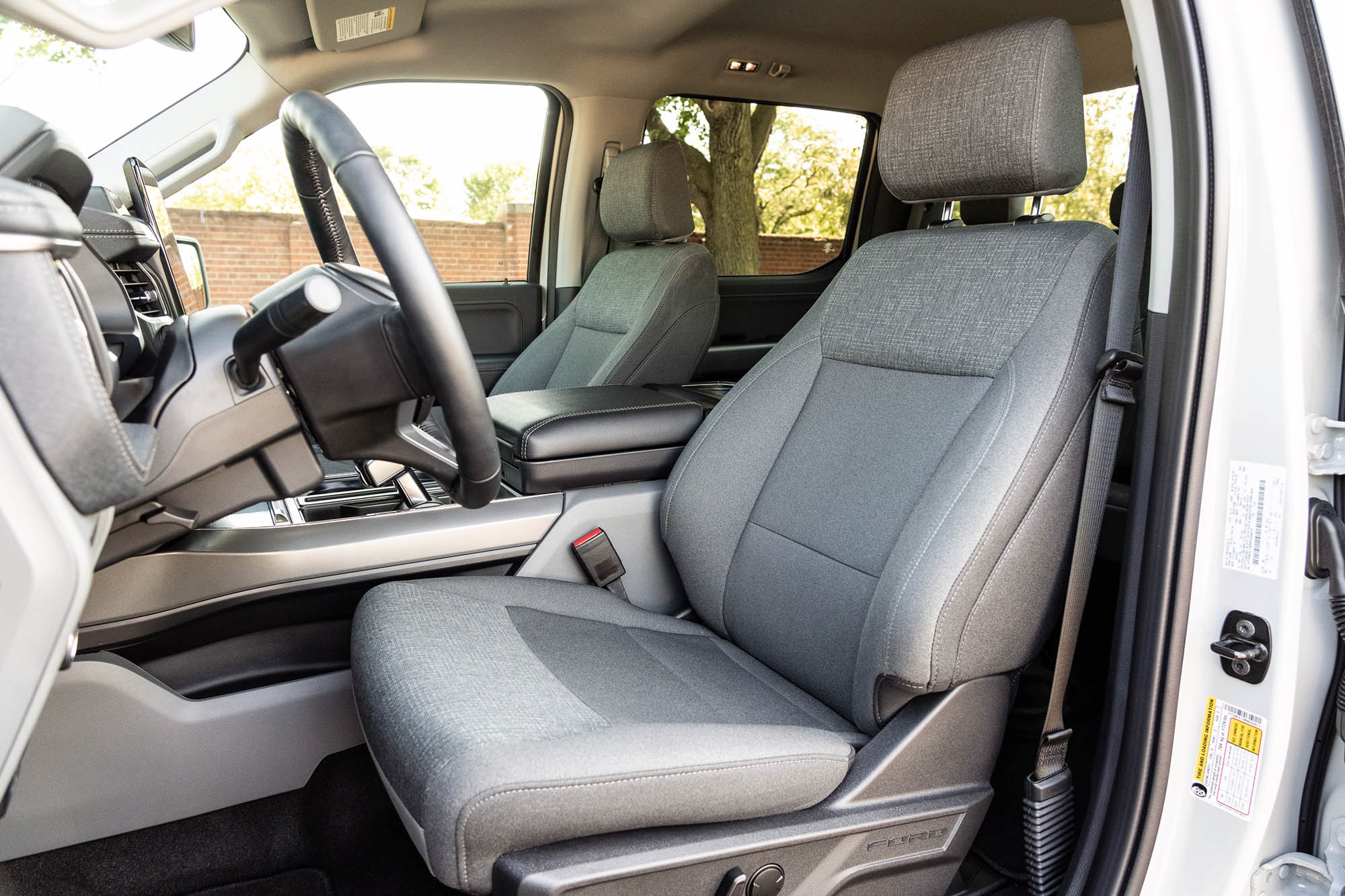 Tim Stevens
Tim Stevens
The F-150 Lightning Still Looks Standard
In an era of futuristic-looking Rivians and distinctive-looking Cybertrucks, the F-150 Lightning looks like a regular truck. Only the sweeping light treatment up front and a few extra badges differentiate it from the gas-powered F-150s that populate the country's parking lots.
Whether that's good or bad depends on your desire to stand out from the crowd. This truck — especially in the Avalanche white — isn't designed for folks looking for a conversation piece. But I thought the white finish paired nicely with the blue highlights on the graphics and gave the Lightning Flash a clean, if restrained, look.
The interior is much the same, understated in dark tones. It lacks the exuberance of the Lariat trim, but to my eye, that's a positive. The woven gray upholstery looks handsome and seems like it'll hold up to the abuse you'd hope a truck like this would see. Additionally, though the seats feel universally flat and simple, there's plenty of room for easy comfort in the front and enough volume in the second row for three adults.
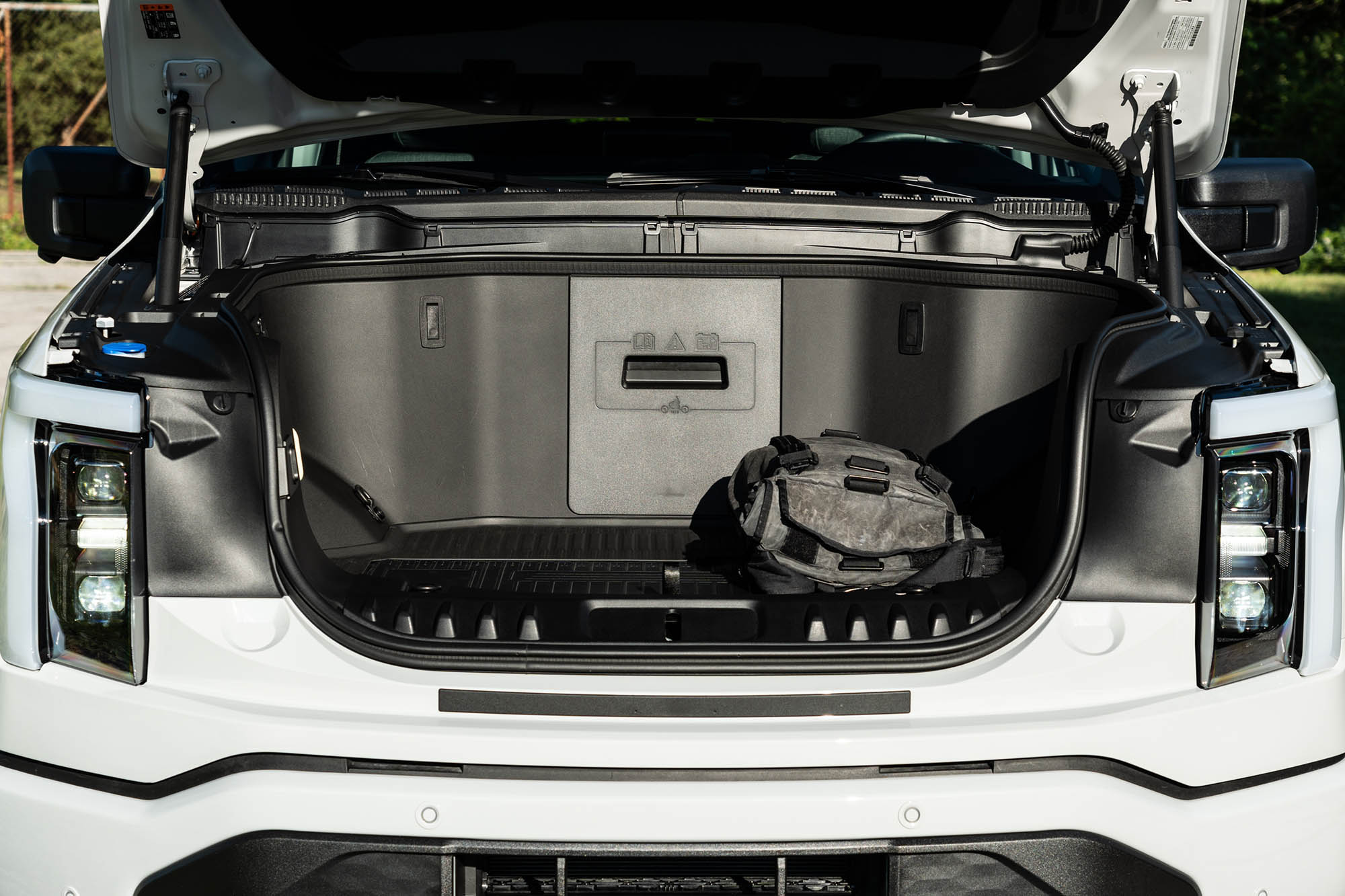 Tim Stevens
Tim Stevens
Of course, there's a massive amount of cargo capacity. The standard bed out back measures 67.1 inches in length and 50.6 inches in width, just right for hauling plywood or drywall with the tailgate down.
The hallmark of the Lightning, though, is the 14.1 cubic-foot front trunk, or frunk, which features tie-downs, grocery bag clips, and even power outlets for charging tools on the way to the job site — or gadgets on the way to the airport. If all that cargo space isn't enough, with the trailering package, the F-150 Flash can tow up to 10,000 pounds.
 Tim Stevens
Tim Stevens
A Big Touchscreen Is Standard, BlueCruise Is Extra
The F-150 Lightning Flash is all about tech-related upgrades, and the most visible is the 15.5-inch touchscreen that dominates the dashboard. Also standard on the Lariat and Platinum trims, the portrait-oriented screen would look gargantuan in any other vehicle. Here, it's perfectly proportioned.
Ford has reengineered the infotainment software slightly. Now called Sync 4A, it adds a few quality-of-life improvements. For example, the layout has been streamlined, and it's easier to toggle between various camera views.
There's also a wireless charging pad, which is handy if you plan to take advantage of the truck's wireless Android Auto and Apple CarPlay compatibility, which integrate nicely into the user interface.
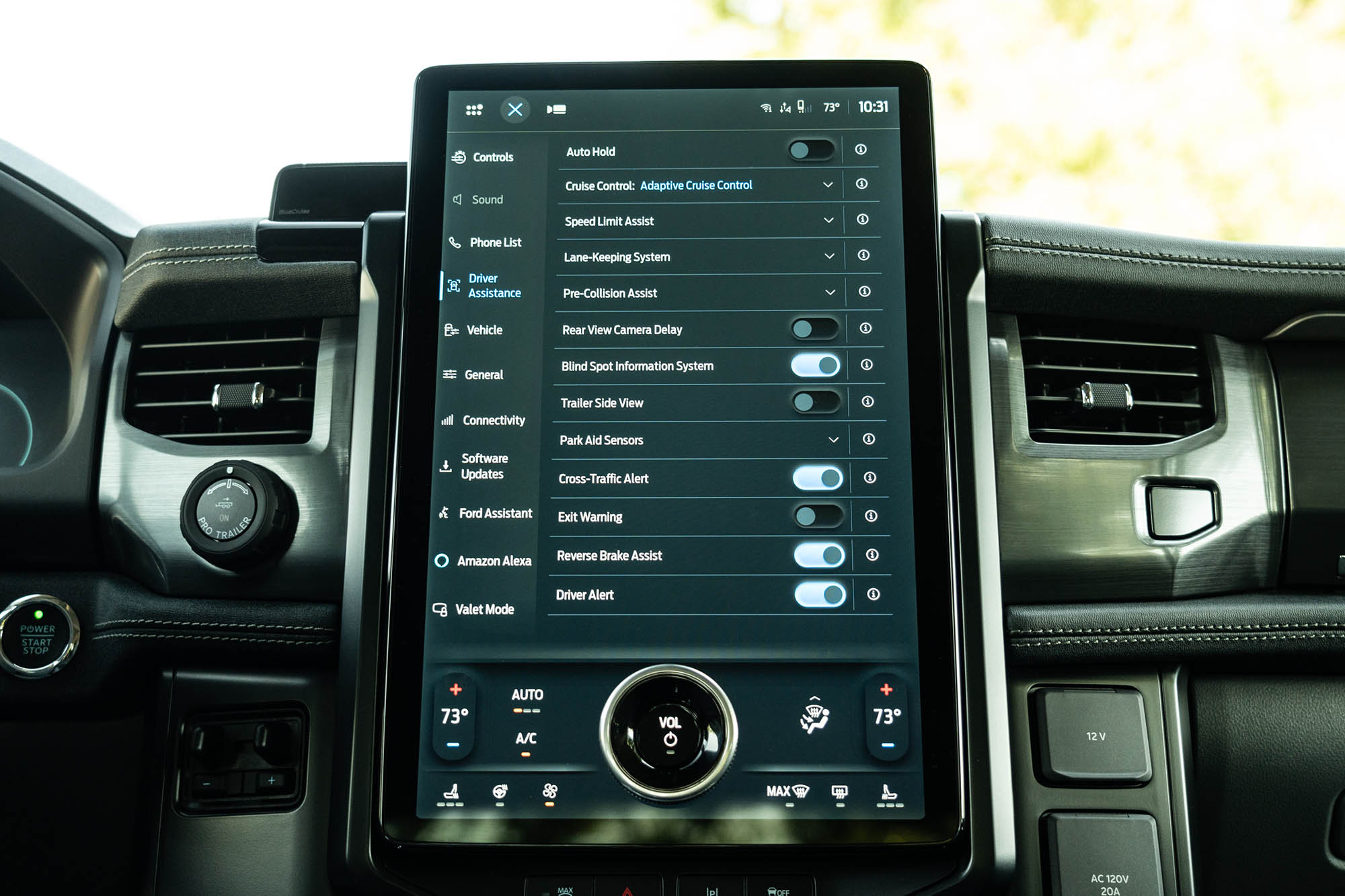 Tim Stevens
Tim Stevens
The other prominent tech feature is BlueCruise, Ford's hands-off driver-assistance system. Adding it will cost $2,100, and it comes with three years of service included. After that, buyers can expect to pay $49.99 a month or $495 annually to retain the functionality. That changes next year, however. For 2025 and onward, BlueCruise will be available as a one-time purchase of $2,495.
I'm a fan of BlueCruise. On the highways around metropolitan Detroit, I found the truck did a great job of keeping itself centered in the lane, even when those lanes crossed heavily broken asphalt or the lines were faded.
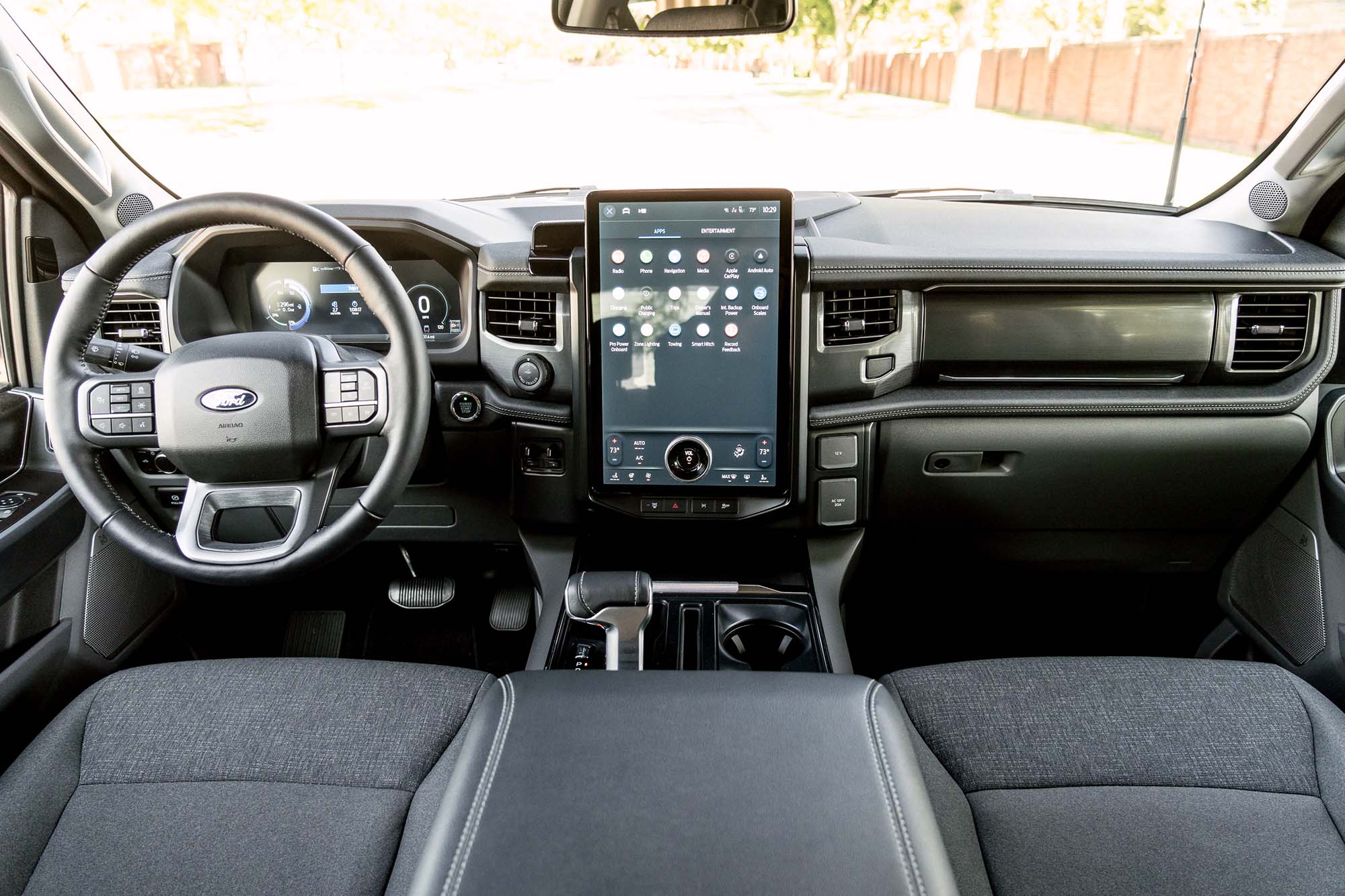 Tim Stevens
Tim Stevens
The F-150 Lightning Offers Truck Dynamics With Extra Punch
The F-150 Lightning is a big truck, and the Flash includes the bigger 131-kilowatt-hour battery pack. That's a lot of capacity, and it comes with a lot of weight. The Lightning Flash tips the scales at more than 6,300 pounds.
Climb into the driver's seat, head out on the road, and you'll feel it. The truck has a floaty, loose character that's unchanged from previous years. But that's fine with me. It results in a pleasant, near-silent ride on the highway and over any imperfect surfaces. Drivers will just need to exercise some patience through corners.
But this can be a truck for the impatient as well. With 580 horsepower and 775 pound-feet of torque, the F-150 Lightning Flash accelerates with vigor and will scoot past slow traffic without issue. In my opinion, the brakes aren't as striking performance wise but feel more than capable.
The F-150 Flash is rated for 320 miles of range from its 131-kWh battery pack. In my mixed testing, I saw 2.3 miles per kilowatt-hour for an estimated maximum range of 301 miles, which is about 19 miles short of the EPA estimate. My observed efficiency of 43.5 kWh per 100 miles, however, beat the EPA's predicted consumption rate of 48 kWh per 100 miles.
While I tested the Lightning on a warm summer day, the truck should do a better job of delivering good range when the weather turns more extreme, as a new heat pump is now standard across the line. That should make for more efficient heating and cooling of the cabin, which can have a pronounced impact on range.
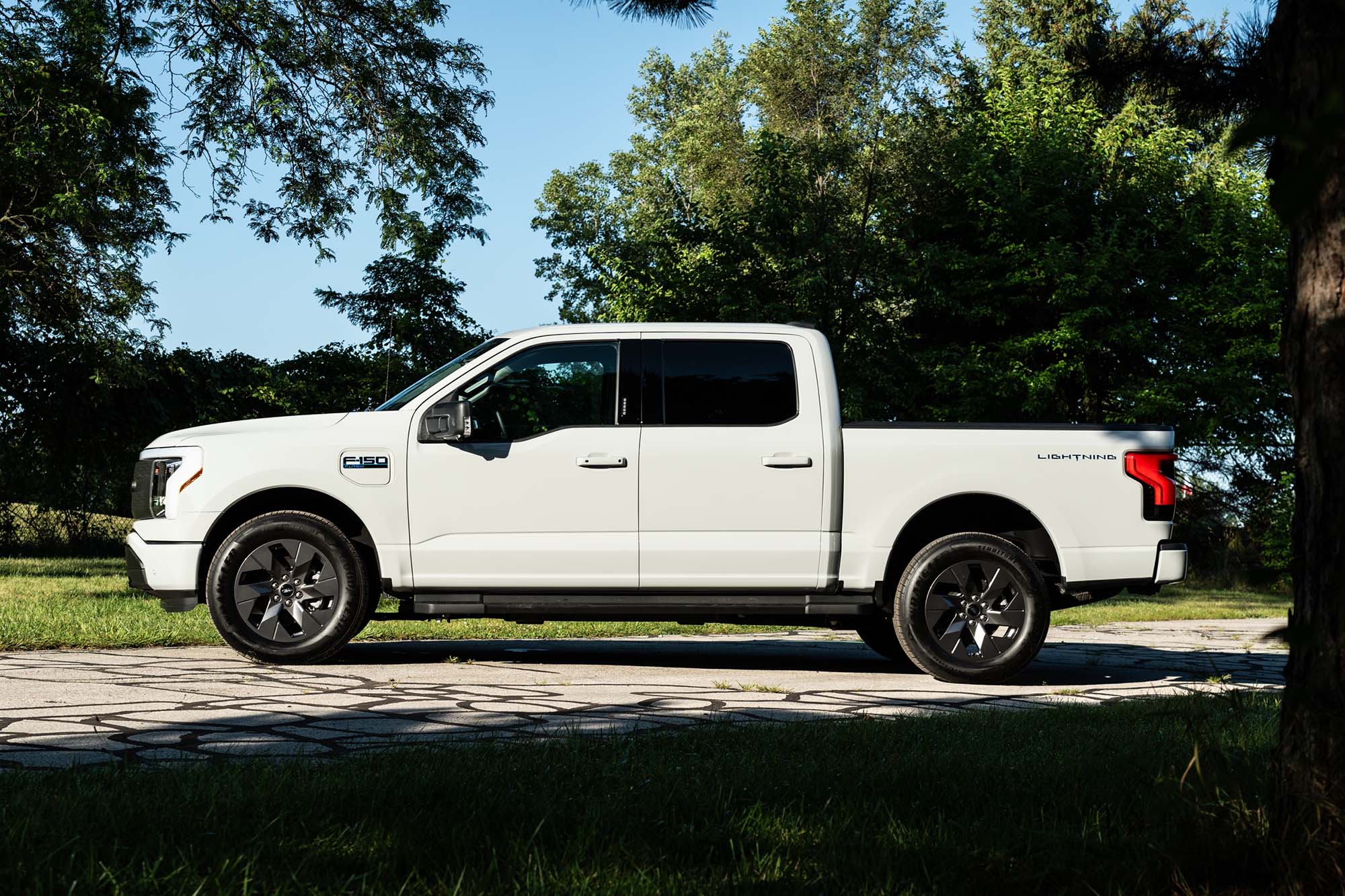 Tim Stevens
Tim Stevens
The Flash doesn't radically change the formula for the Lightning. But in my book, it's a great entry point for people who prioritize tech features and are looking for an attractive, well-appointed, and practical electric truck. While it lacks the interior luxury of the Lariat or Platinum trims, it costs thousands less, and I happen to prefer the humbler styling.
Written by humans.
Edited by humans.
 Tim Stevens
Tim StevensTim Stevens is a veteran editor, analyst, and expert in the tech and automotive industries. He helmed a major website's automotive coverage for nine years and acted as its content chief. Prior to that, Tim served as the editorial lead at a tech-oriented site and even led a previous life as an enterprise software architect.
Related articles
View more related articles